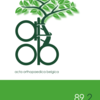Rectangular tapered short stem excellently preserves proximal bone mineral density preservation than tapered wedge short stem
total hip arthroplasty, cementless tha, fitmore, bone mineral density
Published online: Nov 06 2023
Abstract
Fitmore stem is a rectangular, tapered, short, cementless stem. A characteristic feature of this stem is that it provides rotational stability due to the high medullary occupancy achieved by its rectangular cross-section and thick antero- posterior width. We aimed to investigate the differences in periprosthetic bone remodelling between a rectangular- tapered short stem and a short tapered-wedge stem. Eighty patients who underwent primary total hip arthroplasty using a rectangular-tapered short stem (Fitmore) or a short tapered-wedge stem (Tri-Lock BPS) were enrolled in this study. Bone mineral densities (BMDs) in the seven Gruen zones were evaluated using dual-energy X-ray absorptiometry at baseline, and at 6 and 24 months postoperatively. Peri-prosthetic BMD and clinical factors were assessed and compared. In addition, correlations between periprosthetic BMD changes and stem anteversion error were analyzed using Pearson’s correlation coefficient in the two groups. A significantly better postoperative periprosthetic BMD change was found in zones 1 and 7 in the rectangular-tapered group. Additionally, no significant correlation was observed between stem anteversion error and periprosthetic BMD changes in the rectangular-tapered groups. However, in the tapered-wedge group, there were significant negative correlations between the stem anteversion error and BMD changes at 6 months and 24 months in zones 1 and 7. In the rectangular-tapered group, a significantly better postoperative periprosthetic BMD change was found particularly in the region proximal to the stem. Rectangular-tapered short stem can be more resistant to rotation due to higher medullary occupancy and may lead to better periprosthetic BMD than the tapered-wedge short stem, especially in the proximal region of the stem.
